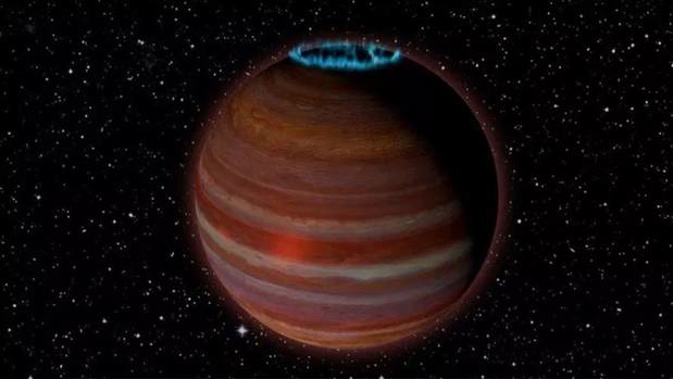
A massive "rogue" planet with an unexplained "glow" has been seen drifting alone through space, scientists claim.
The planet, which is 12 times as large as Jupiter, sits around 20 light years away from Earth.
The rogue planet is the first object of its kind to be spotted using a radio telescope, according to the National Radio Astronomy Observatory.
Both its mass and the enormous strength of its magnetic field, which is more than 200 times stronger than Jupiter's, challenge what scientists know about the variety of astronomical objects found in the depths of space.
"This object is right at the boundary between a planet and a brown dwarf, or 'failed star,' and is giving us some surprises that can potentially help us understand magnetic processes on both stars and planets," said Dr Melodie Kao, an astronomer at Arizona State University.
Brown dwarfs have long baffled experts because they're too big to be considered planets but are not big enough to be stars.
The rogue planet's strong aurora is being compared to the northern lights and aurora borealis seen on Earth.
/arc-anglerfish-syd-prod-nzme.s3.amazonaws.com/public/E5CLLBUJTZBPVHVOYUBWH7ZVEA.jpg)
This rogue planet, and some brown dwarves are known to have auroras of their own despite lacking solar winds.
Kao's team used an advanced radio telescope located in New Mexico to make the discovery and say the new world is 200 million years old and 20 light-years from Earth.
The planet is believed to have scorching surface temperatures of around 825C.
"This particular object is exciting because studying its magnetic dynamo mechanisms can give us new insights on how the same type of mechanisms can operate in extrasolar planets – planets beyond our solar system," Kao said.
"Detecting SIMP J01365663+0933473 with the VLA through its auroral radio emission also means that we may have a new way of detecting exoplanets, including the elusive rogue ones not orbiting a parent star.
"We think these mechanisms can work not only in brown dwarfs, but also in both gas giant and terrestrial planets."
Take your Radio, Podcasts and Music with you









